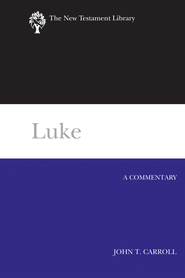For part one of my review, see here. (Amazon link to the book.)
Carroll’s introduction is succinct and adequate, not ground-breaking yet covering real ground. I give it a mark of ‘good’ on a scale of bad to excellent (that’s something like 7 out of 10), particular in view of a semi-technical audience.
On authorship, Carroll lays out the data but remains neutral, advocating for an understanding of the implied author, likely a Gentile of social status, perhaps a God-fearer. Carroll assumes the author has some amount of rhetorical training.
Regarding the date, he says the evidence only allows a date between 75 (allowing for the composition of Mark and the destruction of the Temple) and 125 AD (time for dissemination to Justin and Marcion). More precise dating relies on assumptions (4).
The audience, according to Carroll, is a diverse group (along side of Theophilus, the named recipient in Luke 1:1-4), likely in an urban center in the eastern Mediterranean (possibly broader than one city) (3). Carroll mirror-reads to gather information about the audience and their situation: “Information about the audience . . . only becomes evident as the Gospel unfolds . . .” (17). He suspects the readers already belonged to Christian groups, facing increasing Gentile membership, recent synagogue conflict, left wondering about its identity with the Israel of the Scriptures in the context of the Roman Empire (3–4, cf. 398 ff.). This supposed situation of the audience features prominently throughout the commentary. I will comment more at length on this in part three of my review (next week).
Regarding the unity of Luke and Acts, Carroll takes a strong view, seeing the same author behind both works, the first volume anticipating the second, and so on (9). I’ll offer a bit more on this in part three.
Carroll calls Luke “genre-bending,” a mix of bios and historia, favoring Sterling’s category of “apologetic history” (2, 5). (Not to be confused with the modern notion of historicity, which does not feature prominently in the commentary. Carroll’s focus is on the literary and theological features of the text).
Themes are also introduced here, many of which are unpacked throughout the commentary, especially in excursuses. I will dig into a few of these next time.

[…] Part two here. […]
I see Carroll dates Luke to between 75 and 124. If we accept that John was loosely based on Luke, this gospel could scarcely have been written much later than the turn of the century. I suggest 124 is much too late.
Thanks for your comment, Dick. I think Carroll’s date range is based on what he feels is the hardest, surest evidence, minimalistic as it may be. Perhaps this owes a bit to him remaining neutral on the authorship question which, of course, is closely related to the issue of date.
On the Gospel of John . . . It seems to me scholars continue to debate the relationship between the Synoptics and the Fourth Gospel, so I would hesitate to hinge too much of Luke’s dating to that of John’s. Even so, I am inclined toward an earlier date for Luke based on other evidence.
[…] part one of my review, see here. Part two here. (Amazon link to the book.) I wanted to touch on a few issues before finishing up with […]
[…] John T. Carroll's Commentary… […]